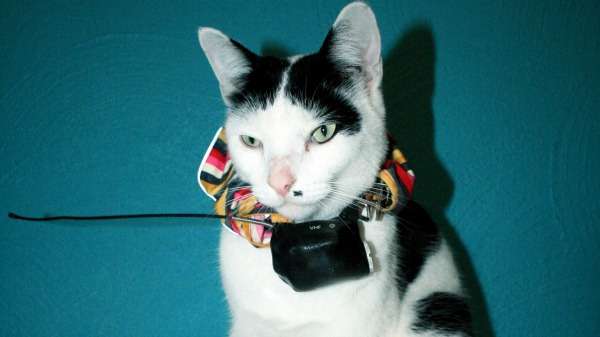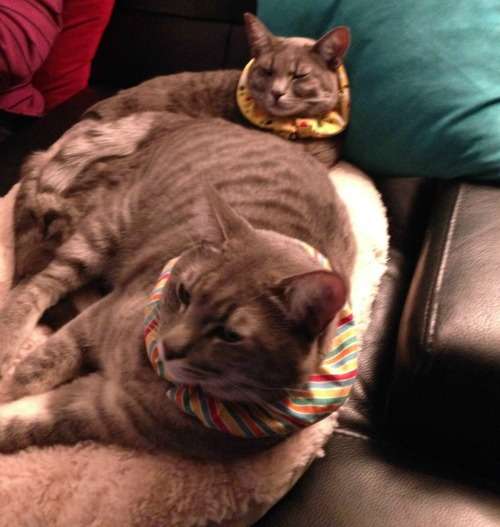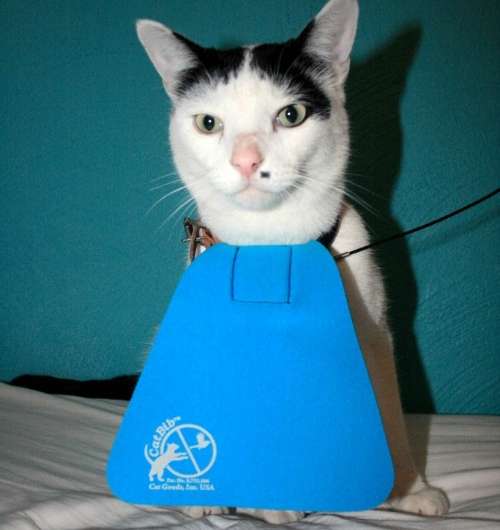Researchers use GPS trackers to determine how far domestic cats roam

While flashy collar covers saved wildlife from the clutches of Perth's domestic cats it seems the same neck attire can't stop local felines from venturing outside to rock their fashion statements.
Murdoch University scientists dressed 30 Perth cats in either a large bib or a collar cover and used GPS trackers to determine how far they roamed and whether the fashion addition stopped them from wandering as far.
They found there was no difference in terms of how far the cats strayed between when they were wearing their new accessory and when they weren't.
Cat owners often perceived that the CatBib and Birdsbesafe caused their pets to stay closer to home, lead researcher Catherine Hall says.
Instead, it was more likely cats roamed just as far with bibs and collars but came home when they were hungry because the devices reduced their ability to catch and eat wildlife, she says.
"It's not that they're staying closer to home but they're coming home earlier, so their owners feel like they're around a bit more," Ms Hall says.
The study follows on from previous research which determined the devices effectively curtailed the amount of wildlife that cats caught.
"The Birdsbesafe is only effective on animals with good colour vision because it's a colour warning—so that's the lizards and birds—but the CatBib is effective more broadly...and reduces the frequency of cats catching mammals, birds and lizards," she says.

The strongest predictor of how far from home cats roamed was housing density, with cats in the study staying closer to home in built-up areas.
"One in three homes in Australia, approximately, has a cat," Ms Hall says.
"It's assumed that [lower] housing density means that there's less cats around, so there's less territorial behaviour, so they're not being restricted as much by other cats in the neighbourhood.

"In suburbia, cats don't go as far as on rural properties."
The research suggests cat owners who want to reduce their cats' hunting without curtailing their range can be confident the Birdsbesafe and CatBib can help.
But cat owners hoping to use embarrassing fashions to keep their animals at home, to prevent them being hit by cars crossing busy roads, fighting with other cats or ending up in neighbours' gardens, should look to another option.
The study claims confinement, although unpopular, remains the most effective solution to the problems associated with roaming cats.
More information: Catherine M. Hall et al. Do collar-mounted predation deterrents restrict wandering in pet domestic cats?, Applied Animal Behaviour Science (2016). DOI: 10.1016/j.applanim.2015.12.006
Journal information: Applied Animal Behaviour Science
Provided by Science Network WA
This article first appeared on ScienceNetwork Western Australia a science news website based at Scitech.




















